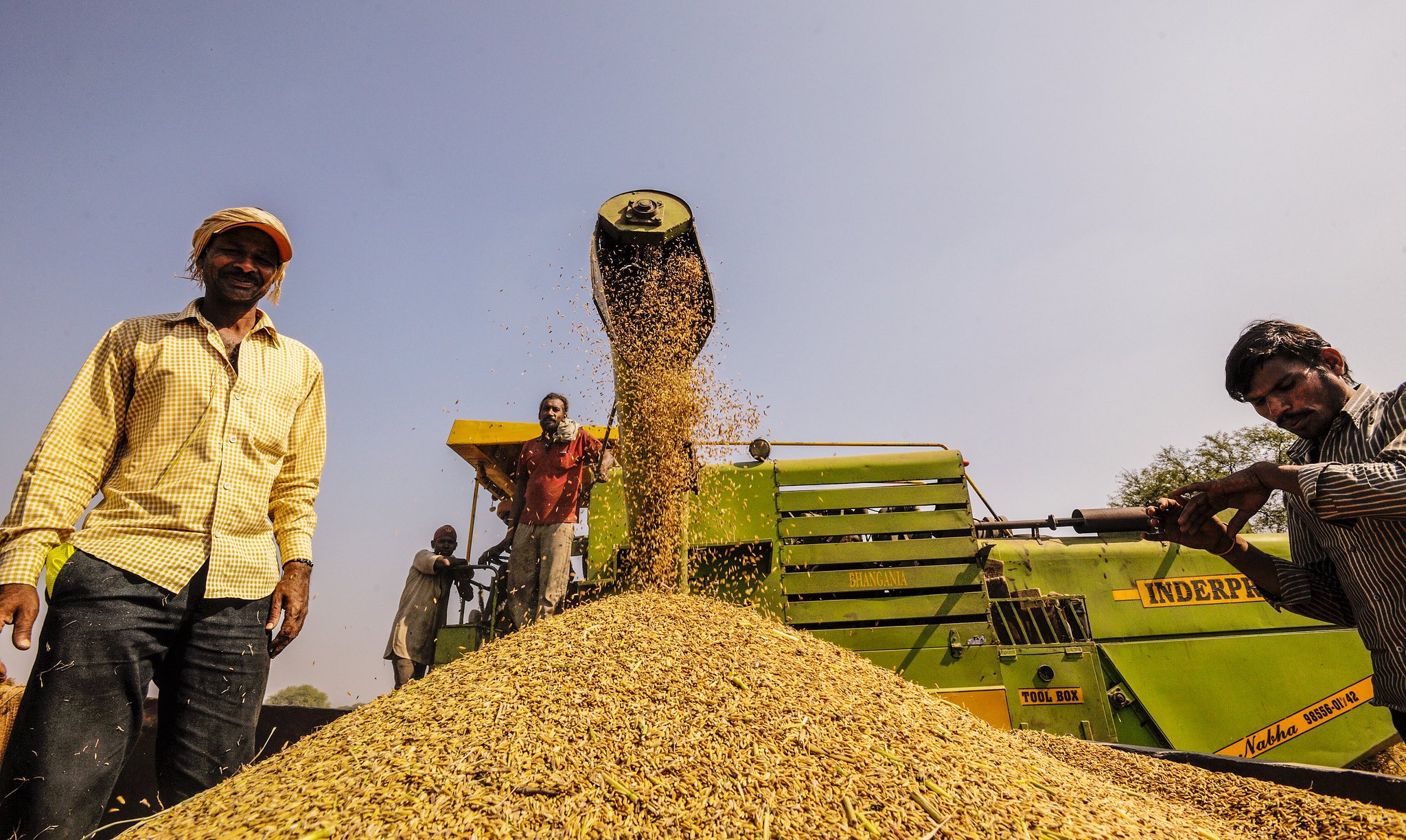Direct benefit transfer has dominated the majority of the discussion on the Interim Budget in the context of agriculture. However, in order to properly understand the seriousness of the government to the cause of farmers and related issues of rural development, we should also assess to what extent the budgetary commitments of the previous year have been fulfilled.
In the case of the high-priority Pradhan Mantri Krishi Sinchayee Yojana, for instance, the revised estimate for the previous year was significantly less than the budget estimate. There are various components of this scheme under various ministries. Taking all these together, last year’s (2018-19) revised estimate was Rs 8,408 crore compared to the original budget estimate of Rs 9,690 crore. The actual expenditure on this scheme, however, was Rs 10,780 crore in 2015-16 – more than the budget estimates for 2018-19 as well as 2019-20. Yet, all official rhetoric suggests that the scheme is advancing rapidly.
When it comes to promoting organic farming, the rhetoric levels of the Modi government are even higher. Let us look at the scheme which is supposed to promote this – the Paramparagat Krishi Vikas Yojana (PKVY). The scheme’s revised estimate in 2018-19 was reduced to Rs 300 crore compared to the original budget estimate of Rs 360 crore.
If we go back a bit further, in 2017-18, the actual expenditure on PKVY was Rs 203 crore compared to the original budget estimate this year for Rs 350 crore. In 2016-17, only Rs 153 crore out of the allotted Rs 297 crore were actually spent. In fact, for all years since this scheme was started under the Modi government, the expenditure has been significantly less than the allocation, although this is supposed to be a big priority for the government.
Also read: Ground Report: What Farmers Had to Say About Modi Govt’s Income Support Scheme
For the National Mission on Horticulture, the revised estimate last year was reduced to Rs 2,100 crore, compared to the budget estimate of Rs 2,536 crore. In the case of the Blue Revolution, the revised budget was reduced in 2018-19 to Rs 501 crore compared to the budget estimate of Rs 643 crore. The revised budget for the National Food Security Mission in 2018-19 was reduced to Rs 1,510 crore compared to the budget estimate of Rs 1,691 crore.
In the case of the Rashtriya Krishi Vikas Yojana (RKVY), the expenditure during the last two years has been around Rs 3,600 crore compared to Rs 8,443 crore in 2014-15.
Other than agriculture, we can look at some other aspects of rural welfare which reveal a similar trend. In the case of Pradhan Mantri Awas Yojana (Gramin), the primary programme for rural housing, the revised estimate in 2018-19 was Rs 19,900 crore compared to the actual expenditure of Rs 22,572 crore in the previous year.
To examine schemes involving more vulnerable sections, we may look at an umbrella scheme for development of scheduled tribes called the Vanbandhu Kalyan Yojana. Its revised estimate in 2018-19 was Rs 375 crore compared to the budget estimate of Rs 420 crore. Actual expenditure on this scheme much earlier in 2015-16 was Rs 629 crore.
Also read: The Budget Should Have Eased Agricultural Bottlenecks and Brought Structural Reforms
Renewable energy has often been described as a big priority by the government. The renewable energy schemes relating to off-grid/decentralised renewable power are considered particularly important for meeting the energy needs of remote villages, another priority area. However, the revised estimate for off-grid and decentralised renewable energy was reduced to Rs 940 crore in 2018-19 compared to the original budget estimate of Rs 1,037 crore. This has been reduced to just Rs 688 crore in the Interim Budget for this year.
In the area of rural sanitation, it is commonly believed that this has been a time of very high spending. However, even in this context, we see a reduction. In 2018-19, the revised estimate for the Swachh Bharat Mission Rural was Rs 14,478 crore, which was much less than the actual expenditure for the previous year at Rs 1,6948 crore. This has been reduced drastically in the Interim Budget for this financial year to just Rs 10,000 crore.
Then there are some other schemes which are common to rural and urban areas but which are often discussed only in the former due to the government’s own publicity. One of these is the maternity benefit scheme called the Pradhan Mantri Matru Vandana Yojana. Its budget estimate last year was Rs 2,400 crore (this itself was criticised as being too low to fulfill entitlements), but the revised estimate for this scheme was brought down to Rs 1,200 crore.
Hence, it is clear that in the case of several important schemes and programmes, the hopes of farmers and other rural people could not be fulfilled even to the limited extent of what could have been achieved by original budget allocations.
Bharat Dogra is a freelance journalist who has been involved with several social movements and initiatives.
